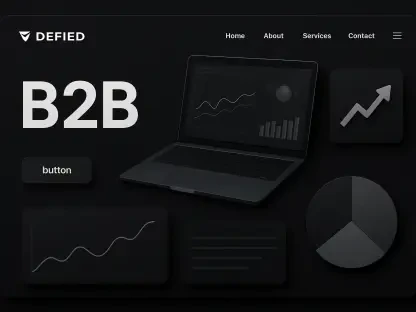Overview of the Festive Marketing Landscape
As the festive season approaches, global advertisers face an unprecedented opportunity to capture consumer attention during a period that often accounts for a significant portion of annual revenue, with holiday spending projected to reach new heights in 2025. With competition for visibility across digital platforms intensifying, brands are pushed to adopt innovative strategies to stand out amidst the noise during this critical window spanning major events like Thanksgiving, Black Friday, and Christmas, demanding precision and adaptability in campaign execution.
The digital advertising space has evolved rapidly, with platforms leveraging cutting-edge technology to offer solutions that maximize reach and conversion. Meta, a dominant player in this arena, has stepped forward with a comprehensive guide tailored for the festive season, aiming to equip advertisers with tools to navigate this high-stakes period. This initiative comes at a time when consumer behavior increasingly shifts toward mobile-first, social media-driven discovery and purchasing decisions.
This report delves into Meta’s latest offering for holiday marketing, exploring how artificial intelligence and automation are reshaping the way brands connect with audiences. By examining key trends, challenges, and future directions, the analysis provides a roadmap for advertisers aiming to capitalize on the festive surge while maintaining compliance and brand integrity.
Key Elements of Meta’s Festive Season Strategy
Structured Two-Phase Campaign Approach
Meta’s 2025 guide introduces a strategic two-phase framework designed to optimize holiday campaigns. Phase 1, centered on third-quarter planning, encourages advertisers to define clear objectives, conduct rigorous testing, and build robust campaign architectures. This preparatory stage ensures that brands are well-positioned before the holiday rush begins, allowing for data-driven adjustments.
Phase 2 shifts focus to execution during the fourth and fifth quarters, targeting peak sales periods with refined strategies based on earlier insights. Industry data underscores the importance of this timing, revealing that a substantial 90% of holiday conversions occur outside the traditional Cyber 5 window, highlighting the need for sustained engagement beyond major sales events. Meta’s emphasis on early action aligns with this trend, urging advertisers to avoid last-minute scrambles.
A key pillar of this approach is structured experimentation, particularly through A/B testing, which has been shown to boost ad performance by 30% for those who implement it consistently. This methodical testing enables brands to identify high-performing creatives and audience segments, ensuring campaigns are fine-tuned for maximum impact during critical festive moments.
AI and Automation Innovations
At the heart of Meta’s strategy lies its suite of AI-powered tools, notably the Advantage+ automation suite, which has delivered a 22% improvement in return on ad spend for sales campaigns in recent data. These tools simplify campaign management by dynamically optimizing placements and targeting across platforms like Facebook, Instagram, and Audience Network, reducing manual workload while enhancing efficiency.
Technical integrations such as Meta Conversions API and Pixel are also prioritized, offering real-time optimization capabilities that result in an 11% increase in purchase conversions when properly implemented. These foundational elements ensure accurate tracking and attribution, critical for navigating the fast-paced holiday environment where every click counts.
Creative enhancements further amplify campaign success, with Advantage+ features generating 8% more conversions per dollar through automated image and video variations. Additionally, resources like Meta Sound Collection for Reels provide accessible audio assets, enabling brands to craft engaging, mobile-first content tailored to the festive audience’s preferences.
Implementation Hurdles for Advertisers
The timing of Meta’s guide release on November 16 poses a significant challenge, leaving advertisers with a narrow window of just 12 to 15 days before major events like Thanksgiving and Black Friday. This compressed timeframe limits the ability to fully execute the recommended early planning and testing phases, potentially impacting campaign readiness.
Another concern is the balance between automation benefits and maintaining brand control. With Advantage+ set as the default for many campaign types, brands accustomed to granular targeting may find the shift to algorithmic decision-making restrictive, raising questions about alignment with specific marketing goals. This tension requires careful consideration to avoid compromising brand identity.
Platform-specific complexities add another layer of difficulty, particularly in areas like catalog management for dynamic ads and navigating Reels’ creative specifications across 25 ad placements. Event deduplication and other technical nuances further complicate implementation, demanding a steep learning curve for teams under tight holiday deadlines.
Navigating Regulatory and Compliance Issues
Data privacy remains a critical focus for advertisers using Meta’s tools like Conversions API and Pixel. Ensuring compliance with global standards while leveraging real-time optimization is non-negotiable, as breaches can erode consumer trust during the sensitive festive period. Advertisers must prioritize robust data protection measures to align with regulatory expectations.
Meta Verified badges offer a valuable mechanism to build credibility, enhancing brand trust among holiday shoppers wary of fraud. These trust signals are particularly impactful during peak shopping seasons when consumers are more cautious about where they spend, providing a competitive edge for verified businesses.
Additionally, Meta’s ongoing API restructuring, with full migration mandated by the first quarter of 2026, introduces compliance deadlines that advertisers must address. This transition, while aimed at streamlining operations, requires immediate attention to avoid disruptions in campaign management during future festive cycles.
Emerging Trends in AI-Driven Holiday Marketing
Meta’s strategic push toward AI as the default advertising experience signals a transformative shift in festive marketing. Tools like Opportunity Score, which has reduced cost per result by 12% for early adopters, exemplify how predictive analytics can refine campaign efficiency, offering actionable insights for optimization.
Innovations such as longer Instagram Reels and generative AI video capabilities point to a future where dynamic, engaging content dominates holiday advertising. These advancements cater to evolving consumer preferences, with 50% of festive shoppers discovering brands on Meta platforms and 41% using them for research, underscoring the platform’s pivotal role in purchase journeys.
Looking ahead, intensified competition among platforms like Google and Microsoft will likely drive further innovation in festive marketing. As consumer behavior continues to prioritize social discovery and mobile engagement, advertisers can expect new metrics, such as Instagram follows for ads reporting, to reshape how success is measured in holiday campaigns over the coming years.
Final Reflections and Strategic Next Steps
Reflecting on the insights gathered, Meta’s guidance emerges as a cornerstone for navigating the complex festive marketing terrain in 2025. The emphasis on AI-driven automation and structured planning provides a clear pathway for advertisers to achieve holiday commerce success, even amidst tight timelines and regulatory constraints.
Moving forward, brands are encouraged to integrate Advantage+ automation while tailoring strategies to specific business needs, ensuring a balance between efficiency and creative control. Investing in technical infrastructure, such as Conversions API, stands out as a vital step to enhance tracking accuracy for future seasons.
A proactive approach to early planning also proves essential, with a call to action for advertisers to begin preparations well in advance of peak periods. By leveraging emerging tools like Reels, which demonstrate a 97% lift in page visits and purchases, and staying ahead of compliance deadlines, businesses can position themselves for sustained growth in the evolving digital advertising landscape.









